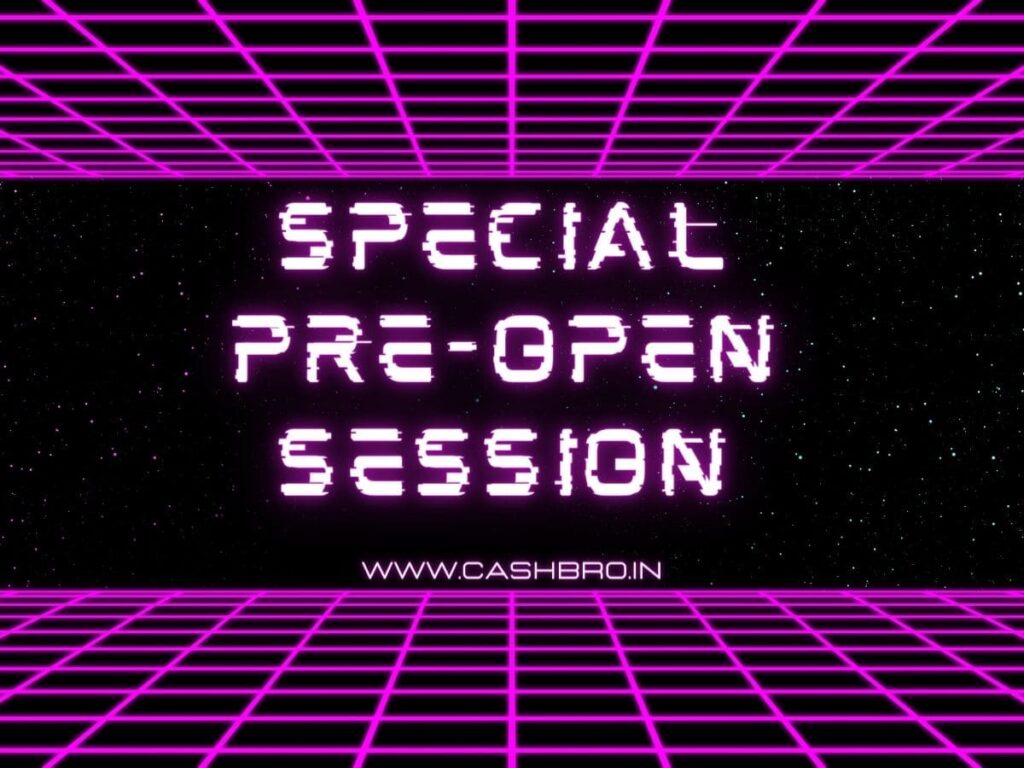Introduction
The world of stock trading is riddled with numerous terms and functions that are crucial to both understanding how markets work and making wise trading decisions. One such term that often surfaces, especially in the conversations of keen investors and stock traders, is the ‘special pre-open session’.
Special pre-open sessions represent a specific time period before the stock market opens for its usual trading hours. This is a period when traders can place orders to either buy or sell securities, but these orders are not immediately executed. Why is this relevant? Understanding these sessions can provide traders a unique opportunity to set the tone of the market.
Having knowledge of the special pre-open sessions is crucial for both investors and stock traders, as this session can provide early indications about market trends, liquidity, and potential price volatility. It presents an opportunity to participants to position themselves advantageously before the market opens for regular trading.
It is on this backdrop that we explore and demystify the concept of special pre-open sessions in stock trading, aiming to provide you with a comprehensive understanding of its significance and operation.

Background: Stock Market Trading Hours
Before diving into the specifics of special pre-open sessions, it is important to first establish a foundational understanding of regular stock market trading hours. Generally, stock markets operate during standard business hours, which typically span from 9:30 AM to 4:00 PM local time for all major exchanges. This includes the New York Stock Exchange (NYSE), NASDAQ, and other prominent exchanges around the world.
These trading hours are split into three main stages:
- Pre-market hours: A period before the official opening of the stock exchange, usually commencing around 4:00 AM and ending just before 9:30 AM.
- Regular trading hours: The time between 9:30 AM and 4:00 PM that signifies the primary trading time in which most of the transaction volume takes place.
- After-hours trading: A period where trading continues even after the closing bell at 4:00 PM, typically lasting until 8:00 PM.
The special pre-open session is an essential segment of the pre-market hours. It is a unique window of time allocated by exchanges specifically for placing orders and adjusting market drivers before regular trading hours begin. It typically occurs close to the opening bell, often within a 15 to 30-minute duration. The timing and structure of special pre-open sessions can vary depending on the specific stock exchange.
In the subsequent sections, we will delve deeper into the nuances and peculiarities of special pre-open sessions, including their significance, rules, and strategies.
Key Components of the Special Pre-Open Session

There are three critical components to the special pre-open session, each with its unique purpose and set of rules:
A. Order Entry Period
The order entry period is the initial part of the special pre-open session when participants are allowed to enter, modify, or cancel orders. This period enables traders to position themselves based on their analysis of pre-market indicators and the anticipated market direction.
Types of orders during this stage include market orders (buy or sell at the best available price) and limit orders (buy or sell at a specified price or better). It is pivotal to note that though orders can be placed, they are not executed in this period and merely stay queued with the exchange’s systems.
B. Order Matching Period
Following the order entry period is the order matching period. At this stage, all the accumulated orders from the order entry period are processed and matched. The process of matching orders is typically based on price-time priority, meaning the system first executes the orders with the best price; for orders with the same price, the system executes them based on their entry time.
One vital rule during the pre-open session is that no single trade is allowed to deviate more than a predetermined percentage from the previous day’s closing price, a measure to keep price volatility in check.
C. Buffer Session
Finally, there is the buffer session. This short session happens immediately after the order matching period and before the commencement of the regular trading session. The buffer session provides one last opportunity for order matching at the equilibrium price derived during the pre-open session.
If any unmatched orders remain post-pre-open session, they get carried over to the regular trading session if they fall within the daily price limits; otherwise, these get auto-cancelled. The buffer session is critical in ensuring a smooth transition between the pre-open session and the regular trading session.
Benefits and Advantages of the Pre-Open Session
Participation in the special pre-open session holds several advantages for traders and investors. Here are a few key benefits:
Early Reaction to Market News or Events
Often, significant news or events that can impact the stock market are announced post-market hours or overnight. The pre-open session provides a stage for traders and investors to react to such developments ahead of the regular trading hours. This ability to react early can prove advantageous, especially in case of extreme news leading to potential price jumps or falls.
Setting the Direction of the Market
The pre-open session acts as the pulse of the market sentiment for the day. It forms an early indication of the day’s possible trading trends. By participating, traders get a chance to gauge the market mood, thereby deriving insights into potential price directions for various stocks.
Managing Price Volatility
While the stock market inherently experiences price swings, extreme volatility can be disruptive. Pre-open sessions help manage potential jittery moves, especially at the market’s open. By allowing a specific window to absorb and digest overnight information, it ensures that price discovery happens in a more ordered fashion. This organized method of order accumulation and execution helps prevent erratic price movements at the open, thus curbing excessive volatility.
Understanding and leveraging these advantages of pre-open sessions can be a valuable addition to a trader’s or investor’s toolkit. It requires active monitoring and quick decision-making but could well be a strategic part of achieving their trading or investment goals.
Read More : Jio-BlackRock Partnership
Pre-Open Sessions in Different Markets
While the special pre-open sessions follow a similar underlying principle across different markets, the specific structure and rules vary between exchanges. Here, we provide a brief comparison of the pre-open sessions in the National Stock Exchange (NSE), the Bombay Stock Exchange (BSE), and briefly touch upon other major global stock markets.
National Stock Exchange (NSE)
In the NSE, the pre-open session lasts for 45 minutes, divided into three segments:
- Order Entry Period (9:00 AM to 9:08 AM): During the first eight minutes, participants can place, modify, or cancel orders. Only market orders and limit orders are permitted.
- Order Matching and Confirmation Period (9:08 AM to 9:12 AM): During this four-minute window, the orders are matched, and the equilibrium price is determined.
- Buffer Period (9:12 AM to 9:15 AM): This phase allows any unmatched orders to be carried over into the regular trading session.
Bombay Stock Exchange (BSE)
The BSE follows a similar structure for its special pre-open session:
- Order Entry Period (9:00 AM to 9:08 AM): The same as in the NSE, participants can place, modify, or cancel orders.
- Order Matching and Confirmation Period (9:08 AM to 9:12 AM): The orders are matched, and the equilibrium price is determined, just like in the NSE.
- Buffer Period (9:12 AM to 9:15 AM): The unmatched orders, if within the price limits, are carried over into the regular trading session.
Other Major Global Stock Markets
Pre-open sessions in other major stock markets, such as the New York Stock Exchange (NYSE) and NASDAQ, have their unique schedules and rules. For instance, NASDAQ provides pre-market trading between 4:00 AM and 9:30 AM. Meanwhile, NYSE permits pre-market trading starting from 7:00 AM until the market opens at 9:30 AM. The specifics of these pre-open sessions can vary in terms of duration, order types, and rules.
In conclusion, while the mechanics and regulations of the special pre-open sessions might differ across exchanges, the underlying objective remains the same: facilitating pre-market price discovery and enabling participants to react to overnight news or events.
Tips and Strategies for Pre-Open Session Trading
Pre-open sessions offer unique opportunities for traders and investors. However, leveraging these sessions successfully requires both knowledge and strategic planning. Here are some tips and strategies to help you approach pre-open session trading more effectively.
1. Stay Informed and Updated
Keeping abreast of the latest market news and overnight developments is crucial for pre-open session trading. This enables you to make informed decisions and respond quickly to any events that could impact stock prices.
2. Analyze Pre-Open Indicators
Study pre-market indicators such as futures index contracts, news releases, global market trends, and other relevant sources to deduce the potential overall market direction and trends for specific stocks.
3. Set Clear Entry and Exit Plans
Define your entry and exit strategies before placing orders in the pre-open session. Establishing price targets and risk-reward ratios can help you manage your positions more effectively and avoid impulsive decisions.
4. Use Limit Orders
When possible, using limit orders instead of market orders can provide better control over your desired entry or exit price. This is particularly relevant in pre-open sessions when price spreads can be wider than during regular trading hours.
5. Practice Risk Management
Ensuring sound risk management techniques like position sizing, stop-loss orders, and appropriately managing leverage are equally essential during pre-open sessions. These can help mitigate potential losses in case of sudden and unexpected price movements.
6. Be Aware of Illiquidity
Pre-open sessions can be characterized by relatively low liquidity, which may lead to larger bid-ask spreads and potential price slippage. Be cautious when trading less liquid securities during this time, as they may be harder to buy or sell at your desired price.
7. Monitor Post-Session Market Moves
Observing and analyzing how the broader market responds after the special pre-open session can provide valuable insights into your trading strategy’s effectiveness and any potential adjustments that need to be made.
Ultimately, engaging in pre-open session trading can be rewarding when approached prudently and systematically. By staying informed, implementing robust strategies, and maintaining solid risk management practices, traders and investors may capitalize on the unique opportunities presented during these sessions.
Read More : Instant Settlements
Case Study: The Enthralling Pre-Open Session of Reliance Industries Shares
In this captivating case study, we explore the impact of a significant transformation in the financial landscape of Reliance Industries, one of India’s leading multinational conglomerates. The separation and forthcoming listing of its financial unit, Jio Financial Services, prompted a remarkable performance of the company’s shares during the pre-open session.
Once Upon a Time: The Background
On July 20, Reliance Industries Ltd (RIL) announced the groundbreaking decision to demerge its financial unit, Jio Financial Services (JFSL). The event created a wave of excitement, as investors eagerly anticipated JFSL’s debut on stock exchanges, sparking significant fluctuations in RIL’s pre-open session valuations.
Unveiling the Key Developments
1. The Birth of a New Entity: Jio Financial Services
Following the demerger, the share price of RIL without JFSL was discovered to be INR 2,580 per share, while Jio Financial Services was valued at INR 261.85 per share after the pre-opening session. These developments fueled a noticeable price upswing during the pre-open market, influenced by the fixed segregation ratio at 1:1.
2. Shareholders Caught in the Web of Change
As a result of the RIL-JFSL demerger, each shareholder of Reliance Industries became entitled to one share of Jio Financial Services for every share held in the parent company. The shareholder composition of JFSL mirrored that of Reliance Industries, with July 20 set as the record date to establish eligible shareholders.
3. Deciphering the Pre-Open Mystery for Jio Financial Services
Amid the unique pre-opening trading session, market analysts delved into the current market sentiment to determine the fair value of Reliance Industries’ stock following the separation. The per-share price of Jio Financial Services was established by comparing the difference between the pre-demerger closing price and the discovered price in the pre-open auction. Consequently, JFSL shares were valued at INR 261.85 in the early session.
4. The Grand Entry Ahead: Jio Financial Services’ Listing
With an expected timeline of 2–3 months, Jio Financial Services is poised to make its grand entry onto stock exchanges. It will join prestigious indices such as Nifty 100, Nifty 200, and Nifty 500. Moreover, it will secure its place as the 51st stock on the prominent Nifty 50 lineup.
The saga of Jio Financial Services’ birth, demerger, and impending listing altered the dynamics of Reliance Industries’ shares during the special pre-open session. This strategic shift generated widespread investor interest and markedly impacted the stock’s performance during the early market activities.
Curtain Call: Riveting Conclusion
Embarking on this thrilling journey through the special pre-open session drama of Reliance Industries’ shares, we’ve encountered the immense importance of understanding these rare market occurrences. These moments, although fleeting, often encapsulate pulsating storylines, allowing investors to peer into the heart of potential stock performances. Being a spectator to such financial dramas can equip you with invaluable knowledge, transforming you into a much more enlightened player in the game of investments.
Now, envision yourself as the maestro of a financial orchestra. Would you leave out any instruments? Of course not! In the symphony of your investment portfolio, considering the pre-open session trading is not just the pianissimo; it can be the crescendo of your financial repertoire.
You see, each chime of the market opening bell can resonate with opportunities that are not just profitable but also exhilarating. By attuning yourself to the rhythm of such significant market shifts, you can compose a more robust investment sweep, avoiding any off-key performances in your financial journey.
So, dear reader, as we draw the curtains on our case study, consider this: your investment strategy is part of a larger dance. Include the special pre-open session trading in your choreography, and experience the thrill of dancing with the market. After all, understanding each step can lead to a show-stopping performance. Curtain’s up, brave investor. The stage is yours!

1 thought on “Demystifying the Special Pre-Open Session in Stock Trading”